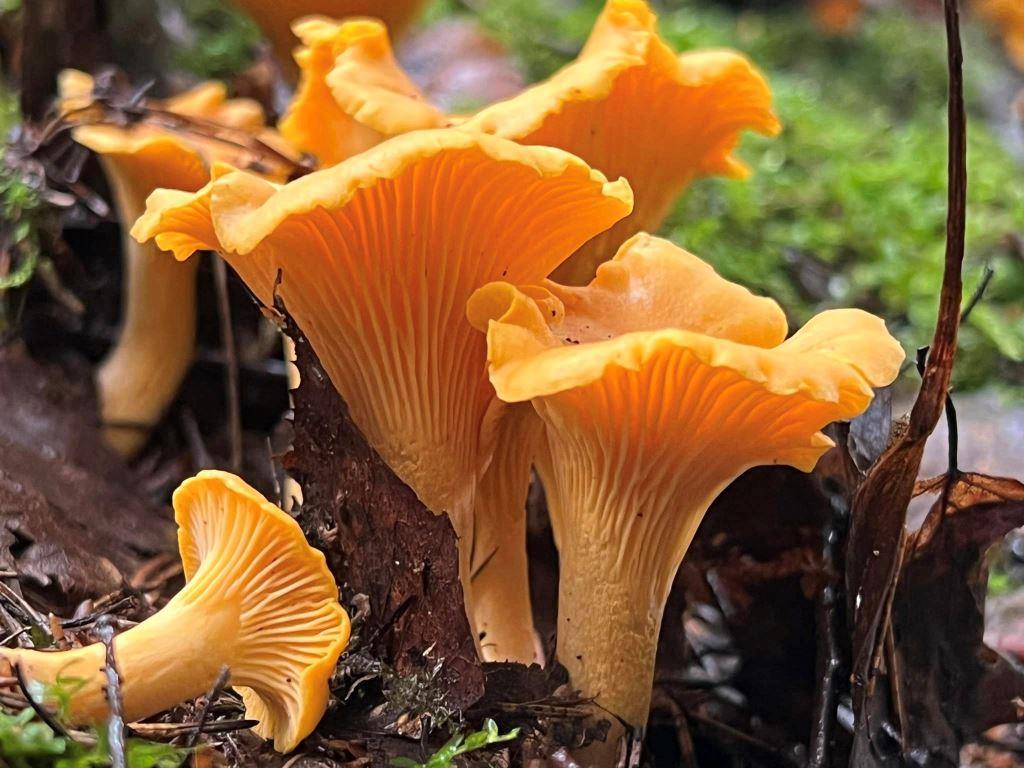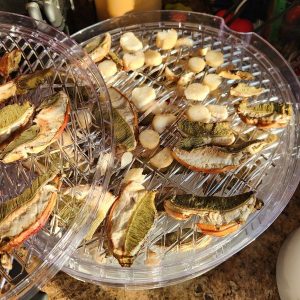Mushrooms are primarily composed of water, and we’ve all witnessed how their volume significantly decreases when boiled or baked. Not to mention drying! However, beef or pork can contain up to 65% water, not to mention various fruits and vegetables—cucumbers come to mind.
The mushrooms we commonly forage in the forest consist of water (up to 80-90%) and dry matter, which, in turn, comprises organic compounds such as proteins, fats, and carbohydrates. Boletus mushrooms are rich in protein, alfalfa in fat, and kelp in carbohydrates.
Now, let’s explore mushrooms that can genuinely be eaten raw, without any fear of poisoning or, at the very least, digestive discomfort.

King Bolete Mushrooms (Boletus edulis)
King bolete mushrooms, also known as porcini mushrooms, offer a robust and nutty flavor profile. Although they are often used in soups, risottos, and sautés, these mushrooms can be savored raw when fresh. The firm texture and earthy taste of king boletes make them a unique addition to salads. Slice them thinly or dice them into bite-sized pieces for a delightful raw experience.

Oyster Mushrooms (Pleurotus ostreatus)
Oyster mushrooms, named for their resemblance to oyster shells, offer a delicate, nutty flavor and a tender, velvety texture when raw. These mushrooms are versatile and can be used in a variety of dishes, including salads, sandwiches, and wraps. Oyster mushrooms’ mild taste complements a wide range of ingredients. Simply slice them and add them to your dishes for an unexpected twist of flavor and texture.
Before enjoying any mushrooms raw, it’s essential to ensure they are fresh, clean, and free from any signs of spoilage. Additionally, always purchase mushrooms from reputable sources or, if you’re foraging, be absolutely certain of the mushroom’s identity and safety.
In conclusion, while most mushrooms are traditionally cooked, these top 5 varieties can be safely enjoyed in their raw form. Whether you’re looking to add a unique texture to your salads or explore new dimensions of flavor in your sandwiches, these mushrooms provide an exciting and wholesome culinary experience. Just remember to savor their earthy goodness and embrace the crunch!

Chanterelle Mushrooms (Cantharellus spp.)
Chanterelle mushrooms are renowned for their golden color and rich, fruity aroma. While they are commonly sautéed or used in various cooked dishes, they can also be enjoyed raw. Their unique flavor profile, combining mild peppery notes with a hint of apricot, adds a delightful twist to salads. To enjoy them uncooked, clean chanterelles thoroughly, slice them thinly, and incorporate them into your favorite salads or as a garnish for appetizers.

White Button Mushrooms (Agaricus bisporus)
White button mushrooms, commonly known as champignons, are one of the most popular edible mushrooms worldwide. These mild-flavored mushrooms have a delicate texture and are often enjoyed raw in salads, sandwiches, or as a crunchy snack. Their versatility and availability make them a go-to choice for those looking to add a delightful crunch and earthy flavor to their dishes.

Enoki Mushrooms (Flammulina velutipes)
Enoki mushrooms are distinct for their long, slender stems and tiny white caps. These delicate mushrooms have a mild, slightly fruity flavor and a pleasing, crunchy texture when consumed raw. Enoki mushrooms are often found in Asian cuisine, where they are used in salads, hot pots, and sushi. To enjoy them raw, trim the root end, separate the stems, and toss them into your salads or use them as a garnish for soups.
Before enjoying any mushrooms raw, it’s essential to ensure they are fresh, clean, and free from any signs of spoilage. Always exercise caution and follow proper identification practices, especially when foraging for wild mushrooms, to ensure their safety and suitability for raw consumption.
In conclusion, these diverse mushroom varieties offer a range of flavors and textures when enjoyed raw. Whether you’re adding a delicate crunch to your salads or seeking to explore the unique tastes of these mushrooms, there are plenty of exciting culinary possibilities to explore.
